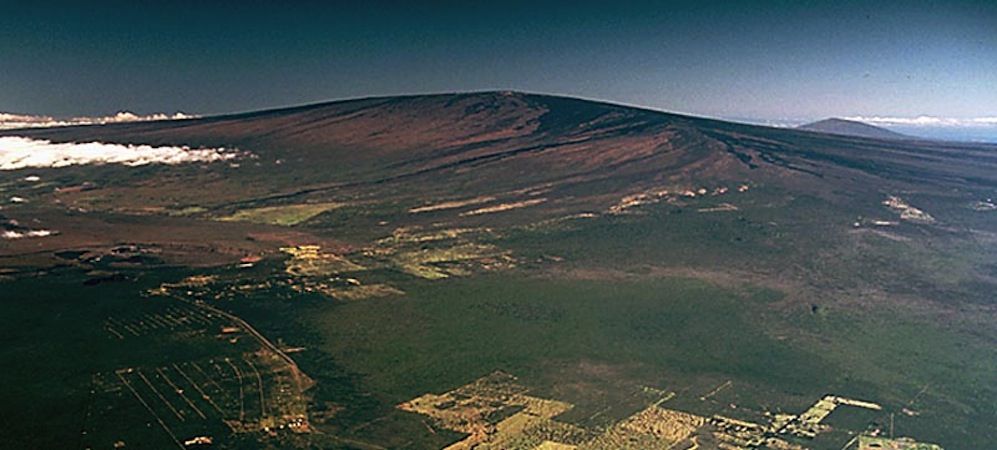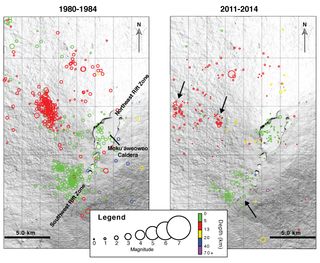
Mauna Loa Volcano May Be Rumbling Back to Life

The world's biggest active volcano, Hawaii's towering Mauna Loa, may be rumbling back to life, according to the Hawaii Volcano Observatory.
But don't change any tropical vacation plans yet: there are no signs the massive peak plans to erupt, the observatory said in its weekly update, released June 12.
Rather, what's jolted the interest of observatory geologists is a jump in the number of tiny earthquakes jarring Mauna Loa.
Four separate earthquake swarms — clusters of earthquakes grouped closely in time and location — have occurred since March 2013 beneath Mauna Loa. The four swarms struck in March 2013, Sept.-Oct. 2013, April 2014 and May 2014.
Each swarm kicked off with earthquakes northwest of the volcano's summit crater, ranging between 2.5 miles and 9 miles (4 to 15 kilometers) deep, the observatory said. These deep tremors were followed by shallower earthquakes at the summit several days to one month later. [The World's 5 Most Active Volcanoes]
All of the quakes were less than magnitude 2.2, except for one 3.5-magnitude earthquake on May 9. These rumbles are smaller than the earthquakes that preceded Mauna Loa's last eruption in 1984, the observatory said.

Mauna Loa is the largest active volcano on Earth and is among the planet's most active volcanoes, having erupted 33 times since 1843.
Sign up for the Live Science daily newsletter now
Get the world’s most fascinating discoveries delivered straight to your inbox.
Before Mauna Loa's most recent eruption in 1984, the volcano's fiery inner chambers and its flanks trembled with earthquakes for three years.
But more than just earthquakes heralded the impending blast 30 years ago. Scientists also detected swelling on the surface of the volcano, called ground deformation, and sniffed out changes in gases streaming from cracks. Both of these shifts signaled magma was on the move below Mauna Loa.
No significant ground deformation has been noted in the past year during the ongoing earthquake swarm, though scientists have measured surges in the past, most dramatically in 2004 through 2006, according to the observatory.
But earthquakes that signal magma pushing toward the surface are different than earthquakes that strike on faults. (Think of the physics of magma squeezing apart fractured rock, versus two bricks sliding past each other.) Scientists can analyze the shaking underneath Mauna Loa to gauge what's going on beneath the volcano.
The recent quake swarm signals that magma is squeezing into Mauna Loa's magma storage chambers in the same spots below where the 1984 eruption occurred, the observatory said.
Email Becky Oskin or follow her @beckyoskin. Follow us @OAPlanet, Facebook and Google+. Original article at Live Science's Our Amazing Planet.

Most Popular

